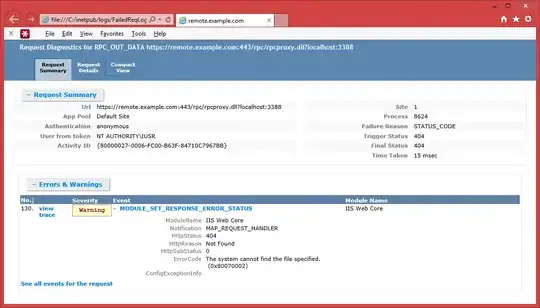I have a single physical host that I am using as a virtualization lab and a number of VM's on Hyper-V that are connected to the host via an internal network. I had it working so that the physical host acted as the Remote Desktop Gateway the router points to the gateway and all was well, I could log into my VM's over the internet.
I have since moved my Gateway to a VM on the internal network that is in my active directory's DNS at remote.example.com with a static IP address. This is so that individual VM's will perform specific roles and that I will eventually be able to use load balancing on my VM's.
At the moment with just 1 VM acting as a RDG I am able to access all my VM's on the internal network fine from my host machine, as it can see the IP address for remote.example.com. I figured I would need to add some forwarding/routing/redirection to the host machine to make the Gateway visible from "outside".
(Internet) ==1==> (Router) ==2==> [Host] ==3==> [remote.example.com] ==4==> [VM_1 | VM_2 | VM_3]
What is the correct way of getting my Host to proxy requests to my internal VM/gateway?
My current setup for ARR in my ApplicationHost.config:
<webFarms>
<webFarm name="Remote" enabled="true">
<server address="192.168.1.3" enabled="true" />
<applicationRequestRouting>
<protocol>
<cache enabled="false" />
</protocol>
</applicationRequestRouting>
</webFarm>
<applicationRequestRouting>
<hostAffinityProviderList>
<add name="Microsoft.Web.Arr.HostNameRoundRobin" />
<add name="Microsoft.Web.Arr.HostNameMemory" />
</hostAffinityProviderList>
</applicationRequestRouting>
</webFarms>
Under system.webServer/rewrite/globalRules:
<globalRules>
<rule name="ARR_Remote_loadbalance_SSL" enabled="true" patternSyntax="Wildcard" stopProcessing="true">
<match url="*" />
<conditions>
<add input="{HTTPS}" pattern="on" />
<add input="{HTTP_HOST}" pattern="remote.example.com" />
</conditions>
<action type="Rewrite" url="https://Remote/{R:0}" />
</rule>
<rule name="ARR_Remote_loadbalance" enabled="true" patternSyntax="Wildcard" stopProcessing="true">
<match url="*" />
<action type="Rewrite" url="http://Remote/{R:0}" />
<conditions>
<add input="{HTTP_HOST}" pattern="remote.example.com" />
</conditions>
</rule>
</globalRules>
Edit:
When I attempt to use the Gateway server through an RDP client I recieve
The gateway failed to connect with the message: 404 not found
After a reboot of Host and VM I am able to access the site from an external device and I am able to perform a failed request trace on the RDP connection.

and it appears that the ARR is trying to handle the request itself and not forward the request to the remote VM
